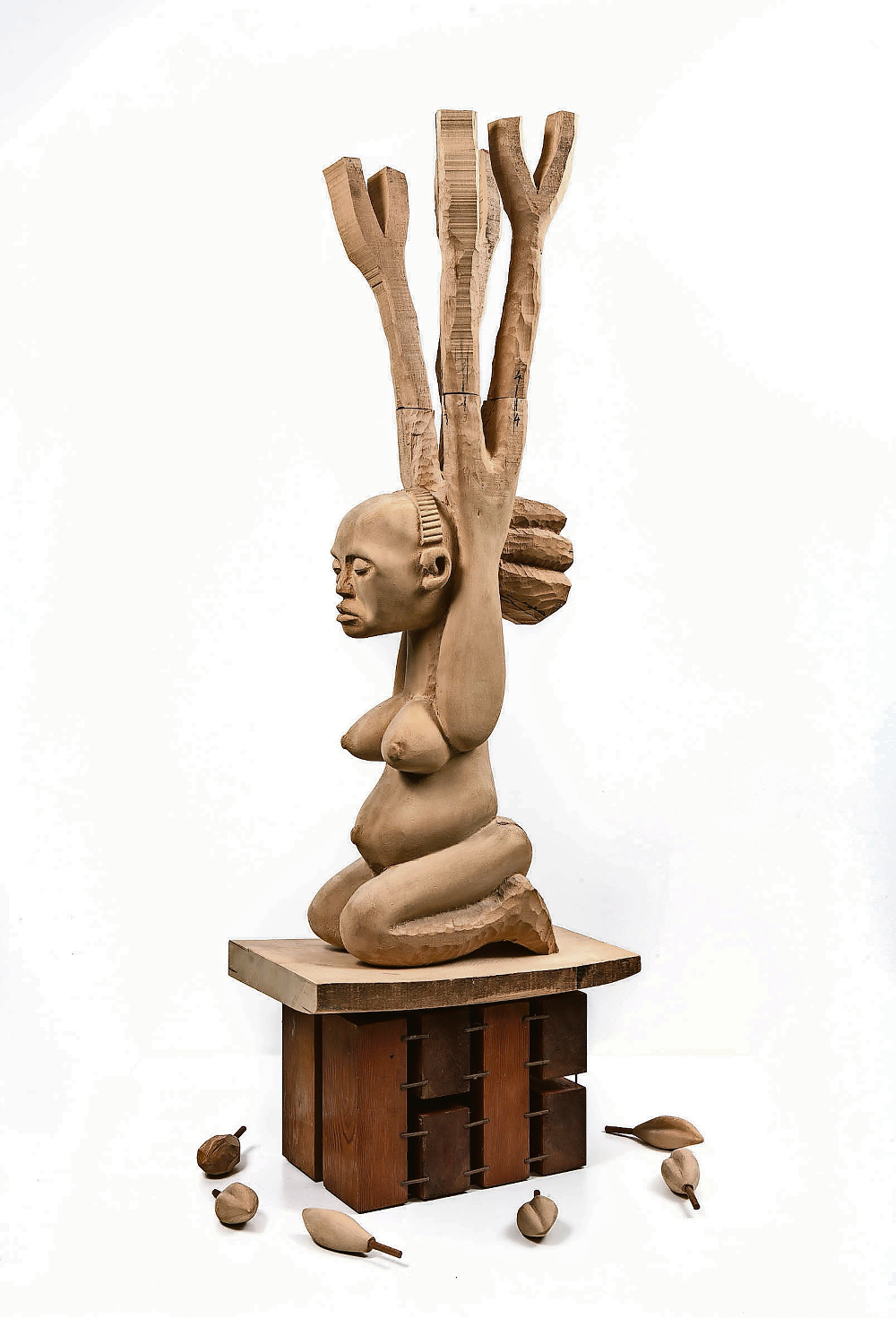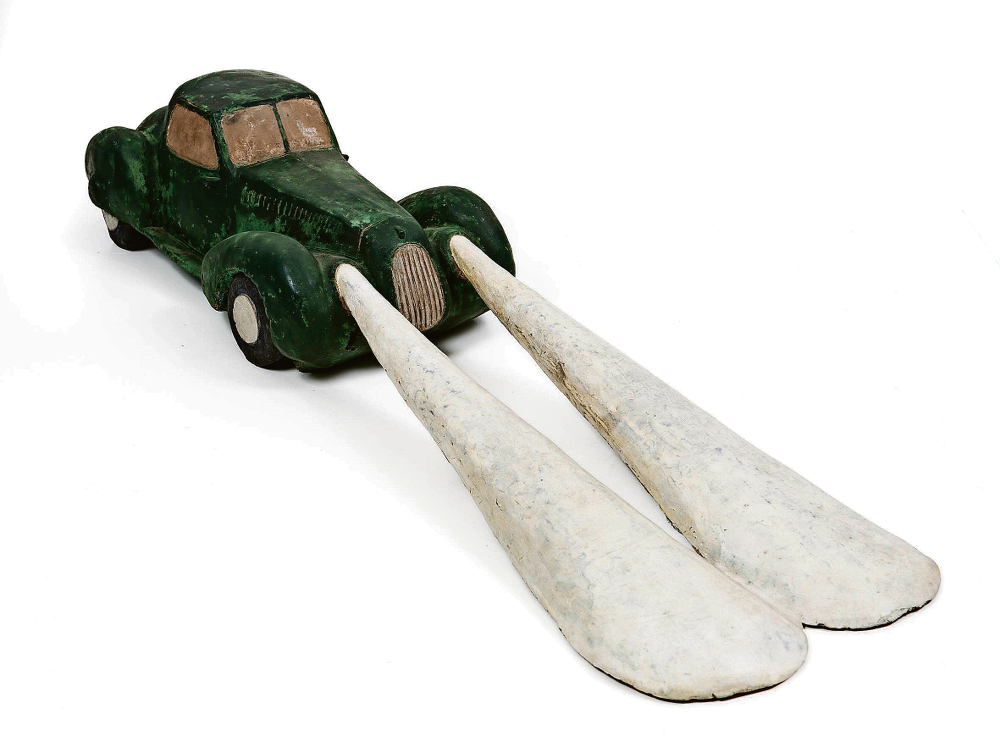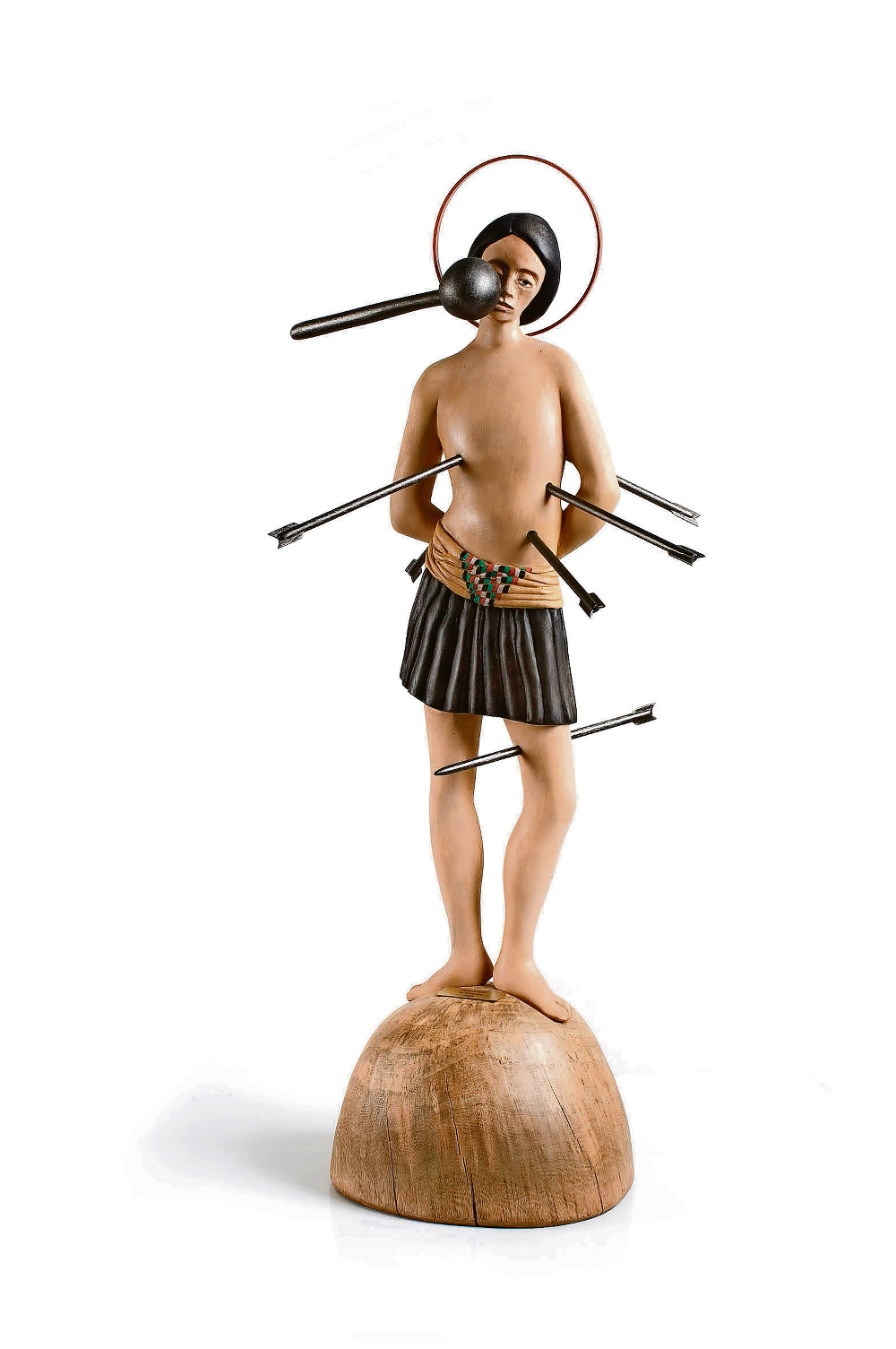Peter Schütz's 'Landscape with Sheep'
You might be forgiven for wishing to take off your shoes as you enter this exhibition of the life’s work of sculptor Peter Schütz. It might leave you convinced there is a god.
Visiting it in Wits Art Museum’s downstairs space, where it is situated, necessitates walking through Beadwork, Art and the Body: Dilo Tse Dintsi, a great flowing monster of an exhibition of Southern African beadwork. It’s a flamboyant, visually pulsating collection of kaleidoscopic beadwork. As you approach the ramp going down and you see the collection of Zionist church staffs, which Schütz collected, displayed on the facing wall, quietude overcomes you; you feel a measurable change in the tempo and it is as though you enter a spiritual sanctuary.
Which, in fact, you are. This exhibition is as much about the presence of Schütz as it is about his absence; there’s the deep sadness that reminds you that he died some years ago, but also an irrevocable joy in remembering his life, not only his work, but also in the way in which the objects he collected are displayed.
As you transition into the space, you hear the deep resonance of the man’s voice. It’s a video of an interview with him at the height of his career, and it lacks the self-important sensationalism this kind of TV doccie approach may lend to an artist’s persona.
His richly accented words cast clarity over his aesthetic decisions and the glorious medievalism of his tools in a world fraught with technological urges. Throughout his career, Schütz used only a mallet and a few chisels to make his work.

Madonna (unfinished work), 2007
The juxtaposition of religious and social values
Born in Glogau, Germany, in 1942 and coming to maturity in KwaZulu-Natal, Schütz, who died in 2008, taught for many years in Wits University’s fine arts department. He is remembered for his office in the building fondly known as The Wedge, an office so jam-packed with doodahs and trinkets, religious kitsch and quirky treasures, there was hardly room for him to stand. He is remembered for his yellow Volkswagen Beetle adorned with stickers and for the black eye patch he wore for much of his adult life.
Playing with the juxtaposition of religious and social values, the works, made of soft, tightly grained jelutong wood originally from Malaysia, are joined together and sanded to a level of perfection so fine that the texture of skin and that of wood become conflated. These are not conventional portraits.
Focusing on the idiosyncrasies of Catholic saints, the oddly ornamental notion of the dumb waiter, or the colonial presence in an animal skin made to become carpet-like in its domestic subservience, Schütz’s work articulates dry humour and profound wisdom in its simplicity. It challenges racist conventions and holds up a mirror to the quirks and contradictions of what it meant under apartheid to be a white South African.
The exhibition has been curated with wise, loving hands by Schütz’s colleagues and close friends, including Jill Waterman, Fiona Rankin-Smith and Walter Oltmann. Their collective desire to sing the praises of this modest and humble, yet irrefutably great man, is unequivocal.
A flurry of explanatory words and labels
They’re also unambiguously successful in doing so: cast in the quiet downstairs space, they offer a resonance with the gallery’s dimness. What you get is an overwhelming sense of peace that gives you the urge to weep or pray.

Untitled (Car with Headlights), 1974
It must be said, however, that this religiosity is cast abstractly and poetically. Iconoclastic without being shrill, challenging tradition without being prissy or self-consciously smart, the work and the manner in which it has been displayed doesn’t lose its essence as a retrospective exhibition; in this way a great balance is achieved in the name of curatorial astuteness.
So, although the works on display are not caught in a flurry of explanatory words and labels, you are able to examine the foibles and understand the chronology.
You see how Schütz contemplated issues such as personal security in South Africa in his early work, translating a beam of electric light into a solid chunk of wood, lending the pieces a presence alarming and cartoon-like in its directness.
You see his animal works, in which the notion of an animal’s pelt lends itself with such mellifluousness to the glorious medium of wood, you think of butter. There’s a cloth on a table, creased by gravity but made of wood, so delicate and honest, but one that is never allowed to slip into slickness, or become self-serving.
A celebration of Schütz’s wise eye
The highlight of this contemplative, sensitive celebration of Schütz’s great and wise eye on his world and yours is the quiet crowd of iconic figures that populate the space. Some are small, others more life-sized, but each is emblazoned with a curious and heady mix of symbols and meaning that are simultaneously disconcerting and witty.

Waiter With a Gourd (Dumb Waiter series), 2006
There are trees growing from the shoulders of this figure, a heart emblazoned with flames pinned to the outside of the body of that figure. Here’s a Saint Sebastian with arrows and clubs assailing his body. There’s a god-like African figure that might make you think of a rickshaw man, because of his elaborate headdress.
Here’s a figure with a crown of flames and Saint Lucy with her eyeballs on a plate. There’s a grim delight in how the Catholic tradition martyrs its own, but the dispassionate expressions on the faces of these characters lend them a sense of peace that enables you to look and look and not want to leave the space.
This exhibition feels modest in size, once you have looked at it in depth, because you want to experience more of these works. It is such a fine celebration of this man and his work who matters so much to the heritage of South African art that it feels an aberration and a pity that the exhibition has a closing date.
Peter Schütz: An Eye on the World is at Wits Art Museum in Braamfontein until August 16